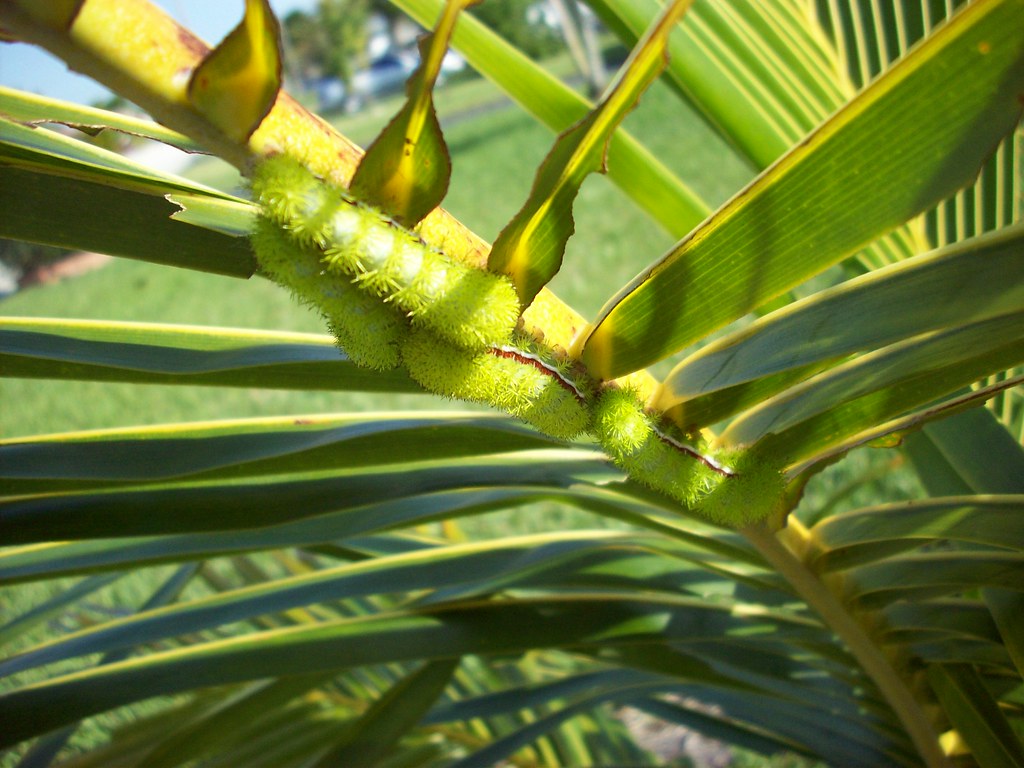Here are a couple more orchids I'm trying to naturalize on my trees. This first one is Prosthechea cochleata one of Florida's native orchids it has interesting flowers, but there aren't any blooms to share with you, so I'll save that for later. I'm trying to establish it in the crook of my Pink Ipê (Tabebuia impetiginosa) it is taking off nicely with lots of new root growth. I can't wait to see it bloom this year!
This one is a funny story. I accidentally broke this cane off one of my larger plants a Dendrobium hybrid and just for kicks I tied the broken cane to my Black Olive (Bucida buceras). I though it died to be honest because it shriveled, but low and behold a new keiki. It's growing vigorously too. This should produce a massive clump eventually. That will be quite a sight when it is in bloom.
Naturalizing Orchids Part II by Eric Bronson is licensed under a Creative Commons Attribution-Noncommercial-No Derivative Works 3.0 United States License.
Based on a work at www.flickr.com.
Sunday, November 30, 2008
Naturalizing Orchids Part II
Posted by Eric Bronson at 7:23 AM 4 comments
Labels: orchidaceae, orchids
Wednesday, November 26, 2008
Io Moth Caterpillars
I have a million little caterpillars eating my coconut palms. They are the larval form of the beautiful Io Moth. I find them from time to time throughout the year. It is found throughout most of America east of the Rockies. The adult Io Moth has a wingspan of 2.5-3.5 inches. This species is sexually dimorphic, males having bright yellow forewings, body, and legs, while females have reddish brown forewings, body, and legs. The males also have much bigger plumose (feathery) antennae than the females. Both have one big black to bluish eyespot with some white in the center, on each hindwing, a defense mechanism meant to frighten off potential predators. [1] We have our own subspecies here in Florida Automeris io lilith and the males have a distinct red-brown forewings. The same type of red form is also found in southern Mexico and the Bahamas. Io moth larvae are leaf feeders, gregarious in early instars, then solitary as they grow. After several weeks of feeding, they make a simple paper-like cocoon away from the host plant. In Florida, there are three to four generations per year. There usually is only one generation in northern states. [2]
The io moth has a long list of host plants, with over 100 recorded plant genera in North America, including such diverse plants as roses, cotton, hibiscus, azaleas, willows, clover, and palms. In Florida, io moth larvae are commonly found on oaks and other hardwoods. [3] I'll say let's go ahead and add Coconut (Cocos nucifera), as a larval food in Florida!!!!
Early instar larvae of the io moth, Automeris i0 11-26-2008


 Adult Io Moths Female(top)and male(below)
Adult Io Moths Female(top)and male(below) photo courtesy of http://en.wikipedia.org/wiki/Image:Automeris_ioFMPCCA20040704-2974B1.jpg
photo courtesy of http://en.wikipedia.org/wiki/Image:Automeris_ioFMPCCA20040704-2974B1.jpg
Original photo by Patrick Coin
Family/Subfamily: Saturniidae/Hemileucinae •
Genus: Automeris •
Species/SubSpecies: io/lilith •
Common Names: Io Moth •
[1] http://en.wikipedia.org/wiki/Io_moth
[2] http://creatures.ifas.ufl.edu/misc/io_moth.htm
[3] http://creatures.ifas.ufl.edu/misc/io_moth.htm
Io Moth Caterpillars by Eric Bronson is licensed under a Creative Commons Attribution-Noncommercial-No Derivative Works 3.0 United States License.
Based on a work at www.flickr.com
Posted by Eric Bronson at 7:29 AM 3 comments
Labels: io moth, saturniidae
Friday, November 21, 2008
Citrus in South Florida
Citrus doesn't fare so well in South Florida! What you see here is a 'Meyer' Lemon and an 'Ortanique' tangelo. I planted them four or five years ago, still no fruit and just a general lack of vigor! So today I dug them up. I potted them in some amazing potting soil, Fafard 3B to be exact. Hopefully, they fare better with lots of extra care because their not gonna make it in the ground. In fact the last three photos are of some sort of fungi that was smothering the root system of the 'Meyer' lemon. We'll see if re-potting it helps!
Citrus in South Florida by Eric Bronson is licensed under a Creative Commons Attribution-Noncommercial-No Derivative Works 3.0 United States License.
Based on a work at www.flickr.com
Posted by Eric Bronson at 1:23 PM 6 comments
Thursday, November 6, 2008
My Research Library!
This is my personal research library. Of course I use the internet too, but the majority of the information I use in my posts comes from these books. I doesn't matter if it is rare fruits, bamboo, or orchids. 90% of the time I can ID it and find the info I need right here. Some of the books I bought, some were gifts, some were found! All I can say is, I love to read!



My Research Library by Eric Bronson is licensed under a Creative Commons Attribution-Noncommercial-No Derivative Works 3.0 United States License.
Based on a work at www.flickr.com
Posted by Eric Bronson at 8:00 AM 2 comments
Labels: research library
















